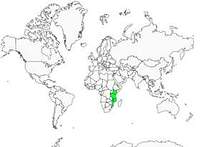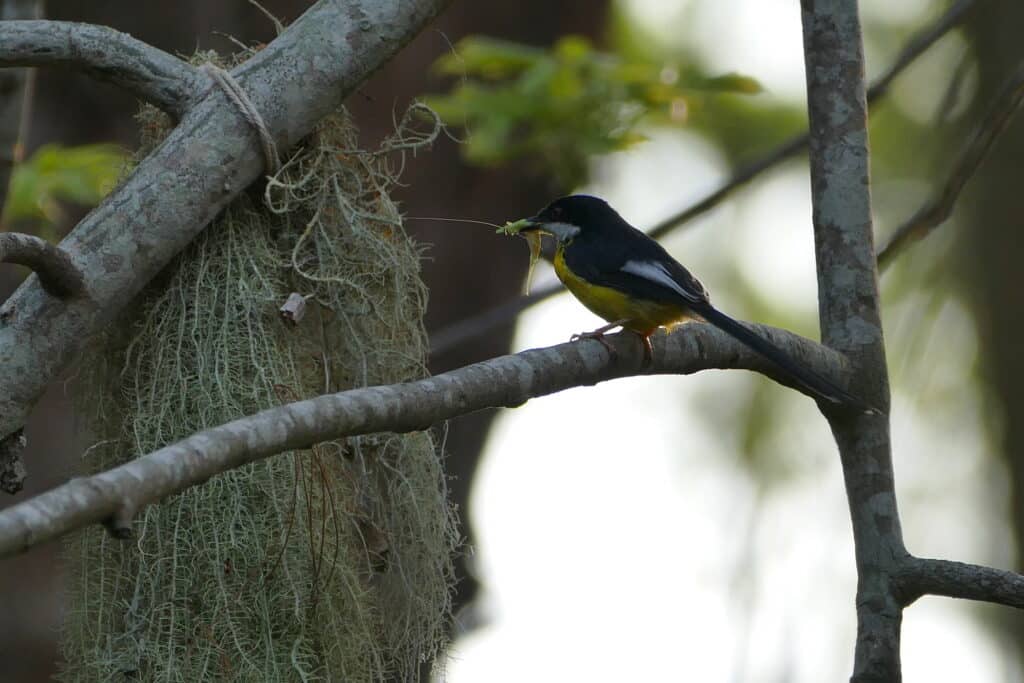The Apalis Chariessa: A Jewel Of The Lower Tana River
Share
The Apalis chariessa, commonly known as the white-winged apalis, is a captivating bird species belonging to the family Sylviidae within the order Passeriformes. This unique bird is endemic to the lower Tana River region in Kenya, making it a significant subject of interest for ornithologists and birdwatchers alike. In this article, we will explore the physical characteristics, habitat, diet, behavior, reproduction, and conservation status of this remarkable species.

Physical Characteristics
The white-winged apalis is a small bird, typically measuring around 12 to 13 centimeters in length. It exhibits a distinctive plumage that is primarily olive-green on the upper parts, with a lighter yellowish underbelly. One of its most striking features is the white wing patch, which is particularly prominent during flight. The bird's bill is slender and slightly curved, adapted for its insectivorous diet.
Habitat
Apalis chariessa is confined to the lower Tana River region, where it inhabits dense riverine forests and thickets. This habitat provides ample cover and nesting sites, as well as a rich supply of food. The bird prefers areas with a mix of tall trees and undergrowth, which allows it to forage effectively while remaining concealed from potential predators.
Diet
The diet of the white-winged apalis primarily consists of insects and other small invertebrates. It forages actively among the foliage, using its agile movements to catch prey. The bird may also consume fruits and seeds, particularly during the breeding season when protein-rich food sources are essential for raising young.

Behavior
Apalis chariessa is known for its lively and active behavior. It often forages in pairs or small groups, communicating with a series of soft calls and whistles. The bird is also known for its acrobatic flight, darting between branches and leaves in search of food. During the breeding season, males may engage in song displays to attract females, showcasing their vocal abilities.

Reproduction
The breeding season for the white-winged apalis typically occurs during the rainy months, when food is abundant. Nests are usually built in dense vegetation, providing protection from predators. The female lays a clutch of 2 to 4 eggs, which she incubates for about 12 to 14 days. Both parents participate in feeding the chicks, which fledge approximately two weeks after hatching.
Conservation Status
The white-winged apalis is currently classified as a species of least concern by the IUCN, but its habitat is threatened by deforestation and agricultural expansion. Conservation efforts are essential to protect the remaining riverine forests along the Tana River, ensuring the survival of this unique bird species.
Birdwatching Tips
For birdwatchers interested in observing the Apalis chariessa, the lower Tana River region is the ideal location. Early morning or late afternoon are the best times to spot this bird, as it is most active during these hours. Look for it in dense thickets and listen for its soft calls, which can help locate its presence.
The white-winged apalis is not just a beautiful bird; it plays a vital role in its ecosystem by controlling insect populations and contributing to the health of its habitat. Observing this species in its natural environment is a rewarding experience that highlights the importance of conservation efforts in preserving biodiversity.
In summary, the Apalis chariessa is a remarkable bird that embodies the rich avian diversity of the lower Tana River in Kenya. Its unique characteristics, behaviors, and ecological significance make it a fascinating subject for both researchers and bird enthusiasts. Protecting its habitat is crucial for ensuring that future generations can enjoy the beauty and wonder of this enchanting species.

